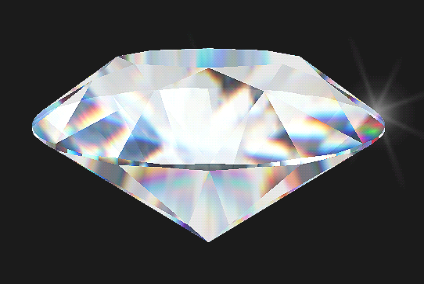

SpaceTime3D would like to thank all of the entrants to the X3Diamond Awards.
Most of the entrants were unable to attend this year's Siggraph Conference.
However, we have posted the winning submissions here on
www.spacetime3d.com. We hope you enjoy viewing the winners. There were
many, many more participants who simply could not finish their entries in time.
We thank you for the effort. We promise to try to update the site with additional
content once we receive it. We believe that the winning submissions will offer
an invaluable educational experience and thereby complement the way
e-commerce is transacted on the internet. Please check this website as well
as www.web3d.org for the NEXT X3DIAMOND AWARDS which will be
announced soon.
Winner: Tu Lam
Created In: BS Contact VRML/X3D
Link: Please click here to view first prize.
Summary:
The diamond simulates an ideal round diamond and is defined using the
X3D ISO standard. It taps into the power of hardware shaders to
compute the external reflections and internal refractions of the gem.
Based on adjustable parameters, the diamond's shape is dynamically
computed. The diamond texture was created using a camera and taking
pictures of a cubic zirconia. To change the diamond properties, click
on the "Options" on the left side of the screen. After that, move
your mouse cursor over one of the blue triangles. This will display
arrows for you to click on. Any time the Options are displayed or a
parameter is changed, the camera will reset to allow you to see your
change.
Here's a more technical description of how it was made:
Based on the angles and ratios that the user selects, the diamond
vertex coordinates are dynamically computed using geometry and
implemented with ECMAScript. For each pixel of the diamond the
external reflection and internal refraction is computed. The external
reflection is computed using an environment map. The internal
refraction is estimated by determining the refraction angle. The
refraction angle takes into account that different colors have
different wavelengths, therefore they have different refraction
angles. The diamond sparkles are randomly placed on one of the
diamond vertex coordinates as the camera is rotated around the
diamond. The programs used to make the diamond are a text editor and
Adobe Photoshop.



